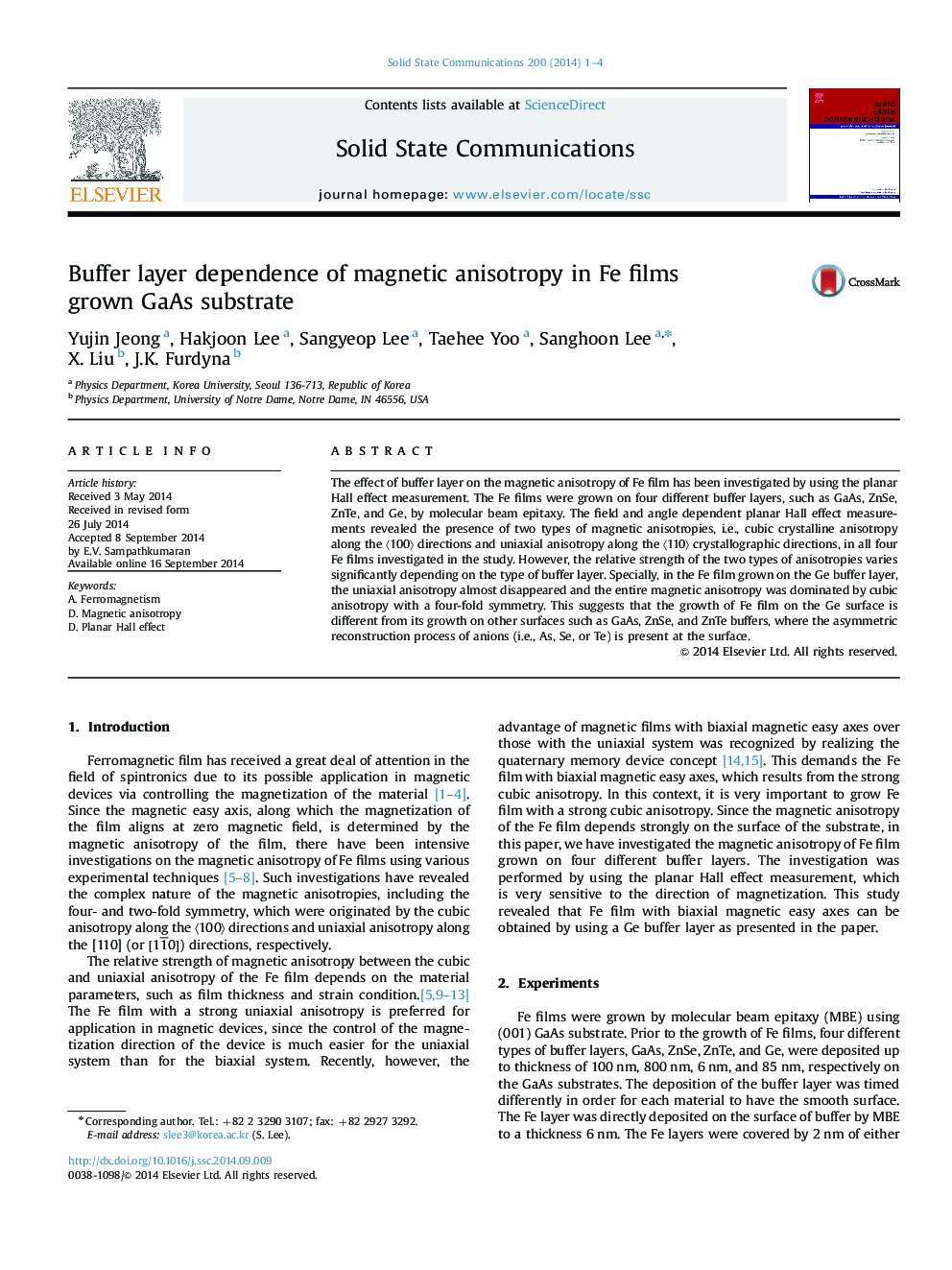| Article ID | Journal | Published Year | Pages | File Type |
|---|---|---|---|---|
| 1591584 | Solid State Communications | 2014 | 4 Pages |
•The Fe films were grown on four different buffer layer surfaces.•The magnetic anisotropies of Fe films depend on the buffer layer materials.•The cubic anisotropy is very dominant in the Fe film grown on Ge buffer layer.•Magnetic anisotropy of Fe films can be controlled by using different buffer layer.
The effect of buffer layer on the magnetic anisotropy of Fe film has been investigated by using the planar Hall effect measurement. The Fe films were grown on four different buffer layers, such as GaAs, ZnSe, ZnTe, and Ge, by molecular beam epitaxy. The field and angle dependent planar Hall effect measurements revealed the presence of two types of magnetic anisotropies, i.e., cubic crystalline anisotropy along the 〈100〉 directions and uniaxial anisotropy along the 〈110〉 crystallographic directions, in all four Fe films investigated in the study. However, the relative strength of the two types of anisotropies varies significantly depending on the type of buffer layer. Specially, in the Fe film grown on the Ge buffer layer, the uniaxial anisotropy almost disappeared and the entire magnetic anisotropy was dominated by cubic anisotropy with a four-fold symmetry. This suggests that the growth of Fe film on the Ge surface is different from its growth on other surfaces such as GaAs, ZnSe, and ZnTe buffers, where the asymmetric reconstruction process of anions (i.e., As, Se, or Te) is present at the surface.
